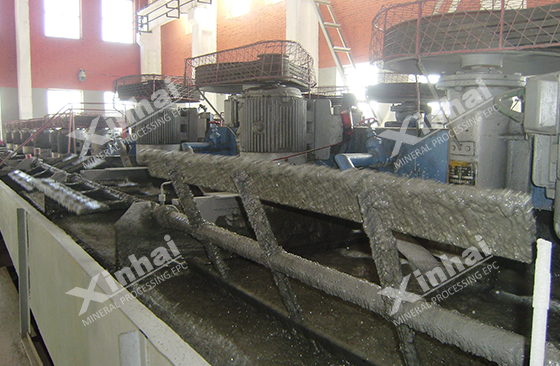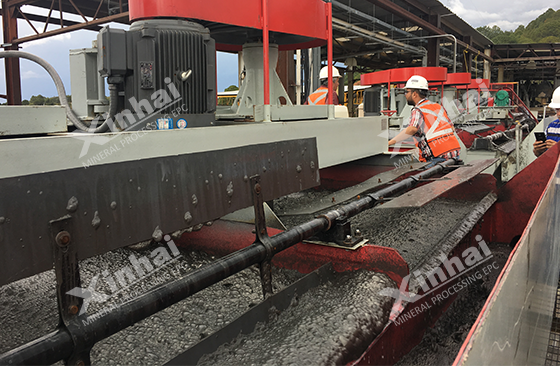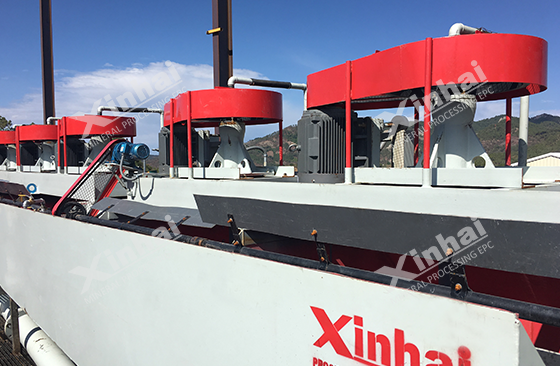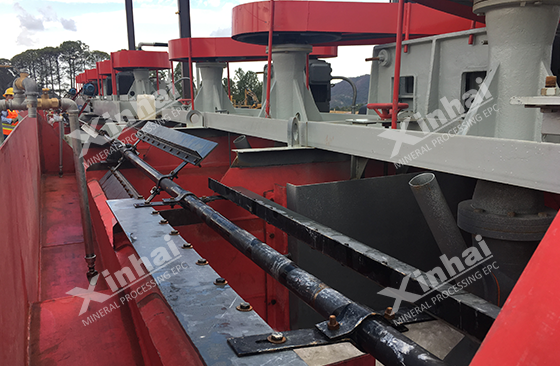With the rapid development of the economy, the global demand for metals such as lead and zinc is gradually increasing. Lead-zinc sulfide ore is the main source of lead and zinc. However, lead-zinc sulfide ores are often accompanied by other minerals such as pyrite and chalcopyrite, which increases the difficulty of mineral processing. The vast majority of lead-zinc ores are complex symbiotic polymetallic ores, and various ions have complex effects on the target minerals. The mutual inclusion of lead and zinc in lead concentrates and zinc concentrates is relatively serious, and the grade fluctuations are also large. Various reasons make its efficient separation and comprehensive utilization difficult. Therefore, this article reviews the flotation process and flotation reagents of lead-zinc sulfide ore, in order to provide a reference for efficient flotation of lead-zinc sulfide ore.

Use the table of contents below to navigate through the guide:
01Lead zinc sulfide ore flotation process
Ore concentrators often use priority flotation process, mixed flotation process, Isoflotability flowshee process, fractional speed branch flotation process and potential controlled flotation process to process lead and zinc sulfide ores. For oxide ore lead and zinc ores, the main method is sulfidation-flotation. In addition, there are chelating agent-neutral oil flotation method, gravity separation-flotation-metallurgical combined separation method, and leaching-flotation-metallurgical combined method. Methods etc. For mixed lead-zinc ores, comprehensive selection can be made based on different ore properties.
1. Priority flotation
The preferential flotation technology is suitable for processing primary sulfide ore with higher raw ore grade. This process has strong adaptability to changes in ore taste and therefore has high flexibility. The concentrate products obtained by preferential flotation are of high quality, so they are widely used in mineral processing plants.

2. Mixed flotation
Mixed flotation technology is mainly used to process ores with low sulfide ore content, complex symbiotic relationships between ores, complex structures and finer particle sizes. Mixed flotation technology can effectively reduce energy and chemical consumption.
3. Isoflotability flowshee
Equal flotation technology is used to treat lead-zinc ores containing sphalerite with varying floatability. The easily floatable sphalerite will float out together with the galena, and the resulting mixed concentrate will be separated from lead and zinc. This can make full use of the flotability difference between the minerals, save the dosage of chemicals, and avoid preferential floating. Select forced inhibition and activation.

4.Potential controlled flotation
Potential controlled flotation technology is used to process fine-grained lead-zinc ores. The slurry potential will have a certain impact on the hydrophobicity and flotation behavior of sulfide minerals. During the flotation process, chemical changes will occur on the surface of sulfide minerals, and electrochemistry is involved in the hydrophobic and hydrophilic processes. If the point position of the slurry is controlled, the flotation index can be improved. This flotation process is simple and consumes less chemicals, but it also requires that the slurry potential is difficult to control.
5.Fractional speed and branch flotation
The fractional speed branch flotation process is used to process ores with lower raw ore grades. When the raw ore grade is low, this process is used to divide the slurry into two branches, and the flotation enrichment of one slurry is fed into the other slurry for flotation. This process can effectively change the mineral processing indicators.

6. Asynchronous flotation
Asynchronous flotation is mainly used to process the flotation of mixed concentrates, control the properties of the slurry, and ensure that galena and sphalerite float fully according to their own characteristics under suitable conditions without synchronization. This process can improve the recovery rate of associated precious metals in lead-zinc sulfide ores, while also reducing the loss of lead and zinc.
The above is a brief introduction to the lead-zinc ore flotation process. In actual production, the choice of lead-zinc ore beneficiation process mainly depends on the characteristics of the ore itself, including raw ore grade, mineral composition, and the embedded particle size of useful minerals in the ore. and symbiotic relationship, the mudification of ore during the grinding process, the physical and chemical properties of minerals, etc. Taking these factors into consideration, an efficient lead-zinc ore flotation process can be selected. In addition, for polymetallic associated sulfide minerals, it is difficult to recover multiple useful minerals by choosing a single flotation process. Therefore, it is necessary to consider a combined process of flotation process and other mineral processing methods or metallurgical methods.


 marketing@ytxinhai.com
marketing@ytxinhai.com  0086 13810327080
0086 13810327080 






































































































 CHAT
CHAT MESSAGE
MESSAGE






